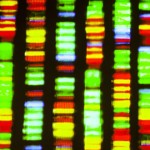 Canakinumab safety and drug survival data for pediatric patients with systemic juvenile idiopathic arthritis (sJIA) who participated in a five-year study demonstrate the drug’s long-term effect on systemic features and joint maintenance. These results span the earliest phase of an international, multi-phase clinical trial of canakinumab through the end of the study’s long-term extension period. Effective glucocorticoid tapering in study patients was also shown.1–3
Canakinumab safety and drug survival data for pediatric patients with systemic juvenile idiopathic arthritis (sJIA) who participated in a five-year study demonstrate the drug’s long-term effect on systemic features and joint maintenance. These results span the earliest phase of an international, multi-phase clinical trial of canakinumab through the end of the study’s long-term extension period. Effective glucocorticoid tapering in study patients was also shown.1–3
Canakinumab is a fully human monoclonal antibody that selectively blocks IL1 beta in patients with sJIA. Prior research has identified IL-1 as playing an important role in the pathogenesis of sJIA.4,5
Two large pediatric rheumatology networks conducted the clinical trial in collaboration with Novartis: the Paediatric Rheumatology International Trials Organisation (PRINTO) and the Pediatric Rheumatology Collaborative Study Group (PRCSG).
This long-term extension study, as well as Phases 2 and 3 of the clinical trial, evaluating canakinumab in treating sJIA patients was led by Nicolino Ruperto, MD, MPH, a pediatric rheumatologist at Istituto G. Gaslini, Genova, Italy, and senior scientist of PRINTO.
“For the first time, early response has been shown to be linked to canakinumab’s long-term survival, rendering it as an easy, identifiable clinical predictor factor of long-term maintenance of remission/low disease activity,” Dr. Ruperto says.
Long-Term Effects of Canakinumab
The Phase 3 study had two trials. Trial 1 was a double-blind, placebo-controlled, single-dose trial. Trial 2 was an open-label study with glucocorticoid tapering, followed by randomization of the responders to continue with the drug or switch to placebo in a double-blind fashion.
For the long-term extension study, 144 patients from Trial 2 were followed for a minimum of 96 weeks. Early responders in the extension study successfully completed the glucocorticoid tapering in Part 1 of Trial 2 and were randomized to the withdrawal portion of the trial. Late responders were moved directly from the open-label part of Trial 2, because they failed to taper glucocorticoids.
All patients within the extension study received further glucocorticoid tapering per physicians’ decision and received 4 mg/kg canakinumab subcutaneously every four weeks (maximum dose: 300 mg). The canakinumab dose was tapered to 2 mg/kg every four weeks in patients not taking a glucocorticoid per physicians’ judgment.
Among the 144 patients who entered the long-term extension study, 96 (54.2%) were early responders with a median Juvenile Arthritis Disease Activity Score (JADAS) of 1.85 representing low disease activity (LDA) status (62% JADAS LDA and 47.9% clinically inactive disease [CID]JADAS) at baseline. These 96 early responders achieved a greater decrease in the JADAS during the study as compared with the late responders (mixed model; P<0.01).

